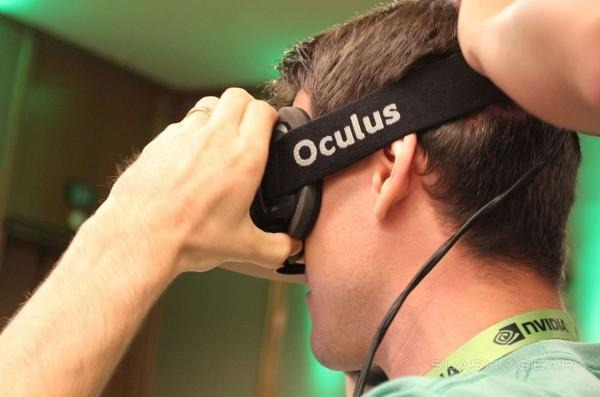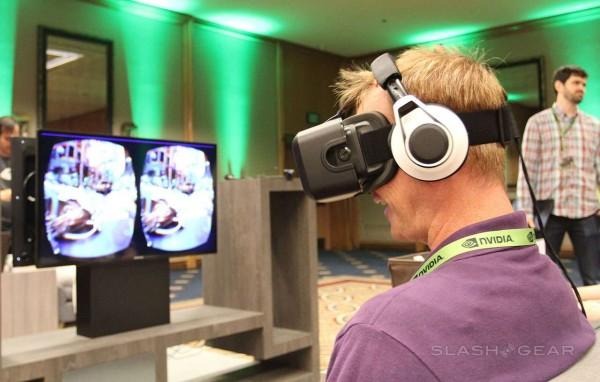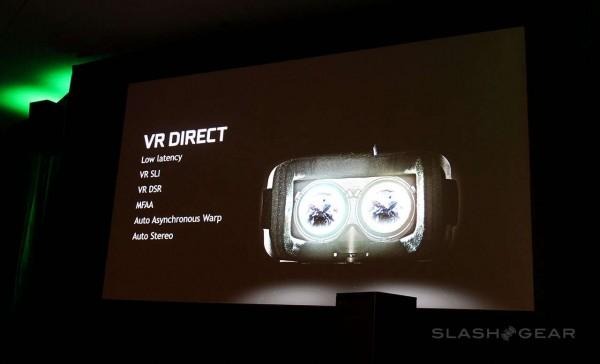Oculus VR "Showdown Demo" with Unreal Engine 4 hands-on
I've changed my mind entirely about virtual reality. The demonstration I saw earlier this month at NVIDIA's Editors Day made it clear – VR is impressive enough and important enough to make a big impact on the gaming industry. What changed my mind? A demo the team at Epic Games call "Carflip" (EDIT: later named Showdown Demo) made with Unreal Engine 4.
Carflip was demonstrated to press and analysts earlier this week at an NVIDIA event called "Editors Day." You'll find a whole lot more information on what NVIDIA presented at the event in our NVIDIA tag portal if you do so please. Of particular importance was VR Direct, an addition to the NVIDIA GeForce Experience which optimizes games for the virtual reality environment – for Oculus Rift, in this case.
The components of the demo went as follows:
• Oculus Rift DK2
• RIG headphones
• Falcon Northwest custom-built PC (hidden in the cabinet)
• NVIDIA GeForce GTX 980 SLI
• "Carflip" demo by Epic Games using Unreal Engine 4
What you're about to see is the basic view. The display inside the VR headset shows this same scene, but the lenses inside the headset work with the software, and the software works with head tracking. When these elements work together, magic happens.

I placed the headset over my eyes expecting another less-than-pleasing experience. Each time I'd used a VR headset – of all sorts – before now, anything other than the most basic of apps made me feel nauseous. This includes the first-generation Oculus Rift DK1.
But here – at last – the perfect combination of elements have opened the VR door for me. NVIDIA spoke highly of their work on reducing latency between the computer and the headset's display – they've done it well enough that whatever latency is left, I don't notice at all.
What's left is immersion as advanced as I've ever felt it.
I advanced through a war zone. Rockets and debris flew to my right and left. Bullets cut through the air visibly past my head. I watched as troops scattered around me in slow motion, rocks cracking below me as I was pushed forward.
It felt magic. It felt like the Weasley family had just led me into their expanding tent at the Quiddich match – the Oculus Rift headset itself felt tiny compared to the infinite universe inside.
Then a robot roared at me, and the demo was over.
And I was disheartened that it was so short. I wanted to stay inside, and keep rolling through this environment – even if it was just the street beyond where nothing was going on. Anything would have been OK – I just wanted to stay inside this virtual environment.

I remember playing a "virtual reality" game set up at a fair back in the late 1990's, back when virtual reality's wave last crested. It was pretty terrible. I got the impression that I was supposed to think I was in a virtual environment, but the optics just weren't there.
Fast forward probably 15 years later or more – and we're here. The Oculus Rift DK2 works with a Samsung Galaxy Note 3 display, which means we're still working with a 1920 x 1080 display in two halves, 960 x 1080 each. That's not super great – nor is the fact that we're still in a place where VR at the level I've seen here can only be experienced by a select few.

But it has begun. Once the prerequisite "must-have made-for-everyone" VR headset is released and that one developer makes the "you need to see this" VR experience, we enter a whole new world full of potential for everyone – not just gamers.
We'll be continuing to cover the virtual reality universe here on SlashGear through our virtual reality tag portal. We've also got the Oculus Rift tag portal for those of you more interested in that piece of hardware specifically – they often overlap. It's up to you!
